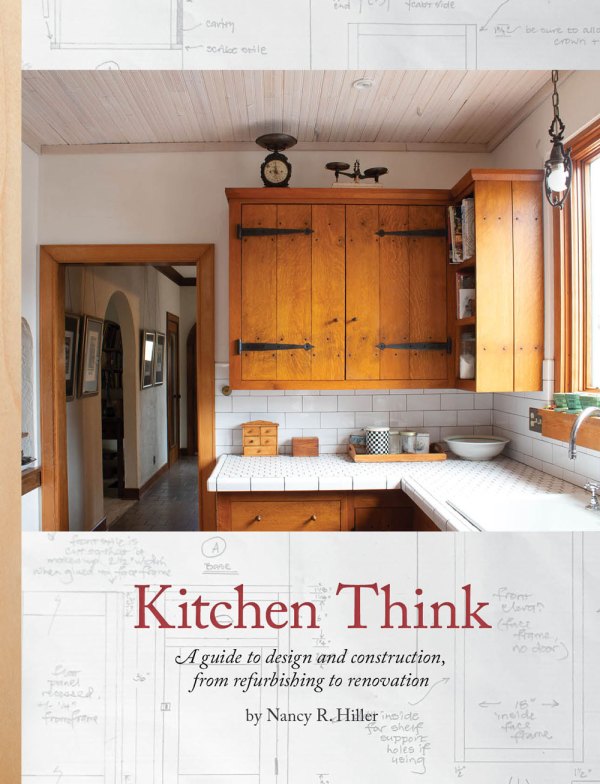
by JULIE GRAY
Furniture designer and builder Nancy Hiller works as deftly in ink
as she does in wood.
Like her well-crafted cabinetry, her newest book, Kitchen Think (Lost Art Press), is both useful and beautiful. As Hiller explains at the outset, her book’s primary audience is woodworkers and do- it-yourself remodelers. She also writes for homeowners who want to understand what the professionals are up to. Her last category of readers, she explains, are people in search of design inspiration. And who isn’t in search of that?
In other words, Hiller’s audience is a broad one, and her bright, clear writing, accompanied by abundant, gorgeous photos, make her book accessible, even fascinating, to everyone. She begins by tracing how the kitchen acquired such a central position in our houses and lives, noting that for much of history, the kitchen was the realm of servants or women.
Beginning in the 1960s, however, as it became acceptable and even fashionable for men to cook, Hiller observes that “tiny pass-throughs between kitchens and dining rooms morphed into open peninsulas with breakfast bars.” By the 1990s, the kitchen had become a “sociable space completely open to the public areas of the house.”
While kitchens may no longer be snubbed as workaday spaces, the craftspeople who make kitchen cabinetry are often still slighted. “Among woodworkers,” Hiller says, “kitchen cabinets are the poor step-sister of the furniture world.”
Her book proves how misguided that snobbery is. Hiller leads us through case studies of many of the kitchens that she has transformed. For Bloomington readers, these studies hold a special appeal because many of the kitchens are local. No matter where you live, though, Hiller covers so many kitchen styles and configurations that you are sure to find ideas.
At its heart, the book is a manual for woodworkers, as Hiller carefully outlines the order of work, from demolition to appliance installation. She gives detailed instructions for everything from how to make a retro-style linoleum countertop to how to fit a wooden counter into a tricky space.
But rules like “Respect the Windows,” for example, or “Regard the Home’s Historic Character” are universal principles. And Hiller’s appreciation for environmentally and ergonomically friendly design is important in every room of the house.














